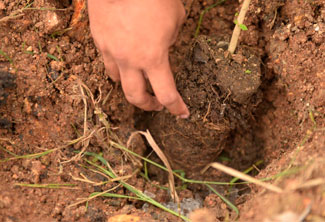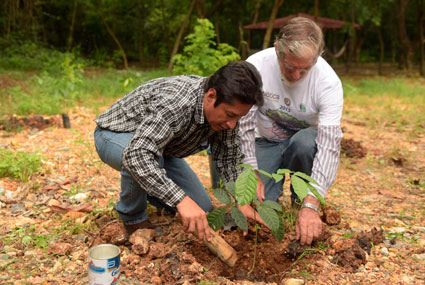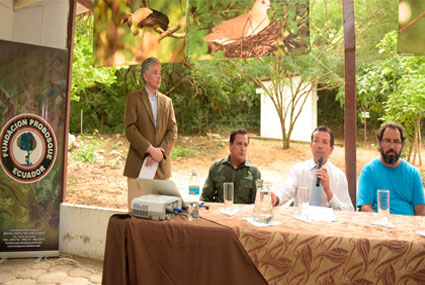6,100 trees planted in the Cerro Blanco Protective Forest in Ecuador
CAF and Fundacion Pro Bosque promote the forestry restoration of 13 hectares to contribute to the enrichment of the forest
With the purpose of compensating for the carbon footprint of CAF's office in Ecuador, as well as contributing to the forestry enrichment of the Cerro Blanco Protective Forest (BPCB, for its acronym in Spanish), 6,010 trees of different varieties were planted in the Northeastern part of the BPCB, better known as the "Carbo sector" area.
Bernardo Requena, CAF's Director Representative in Ecuador, pointed out, "The Cerro Blanco Protective Forest was considered the ideal place to implement the project to compensate for CAF's carbon footprint through the Fundacion Pro-Bosque, as it is one of the best preserved remnants of dry forest in the Ecuadorean coast and one of the green lungs of Guayaquil". In addition, he stated, "this activity to compensate for the carbon footprint seeks to generate awareness regarding the environmental impact, and intends to become an initiative that can be copied".
The trees were planted in an extension of 13 hectares, and belong to 15 different forestry species (among them: Guachapeli, male Cockspur Tree, Cascol, Amarillo, Laurel, Cocobolo, Balsamo, Mahogany, Colorada, Guayacan, Pechiche, and Ebony); This was done to strengthen the forest's natural regeneration process and to enrich it by incorporating large numbers of diverse forestry species that belong to this ecosystem, and which naturally would take a long time to establish themselves. Many of these species constitute a source of food and enrich the habitat of the Guayaquil Parrot (Ara ambiguus guayaquilensis), the city's symbol bird, which is in danger of extinction. A conservation strategy is being implemented to avoid the reduction of its population.
CAF's regional environmental strategy recognizes the environmental component as a determinant in the productive transformation and development of Latin American countries. For this reason, this compensation activity for the carbon footprint seeks to generate awareness regarding the environmental impact generated by a person or an institution through emissions of carbon dioxide (CO2) in their daily activities, and intends to become a model to be copied in several institutions in the country. This activity will allow compensating for 189 tons of CO2, of the 229 tons that were generated by CAF's office in Ecuador.
In 2014, CAF-Ecuador carried out a similar activity to compensate for the carbon footprint through a voluntary reforestation in the Jerusalem Protective Forest in the city of Quito, planting an area of 8.5 hectares of Andean dry forest.
The BPCB includes an area of dry tropical forest with more than 700 species of vascular plants, 220 species of birds, 54 species of mammals, 22 species of reptiles, 8 species of amphibians, and many species of insects.
CAF's more recent content

CAF, ECLAC, IDB and PAHO Promote Sustainable Development in the G20
The Regional Organizations of the Americas congratulate Brazil on its successful G20 Presidency, highlighting its leadership on key issues such as poverty, governance, and climate change. They also reaffirm their commitment to actions that promote equity and development in the region.
Urgent Call for Action to Safeguard Caribbean SIDS at CAF Symposium
As the global community grapples with the escalating climate crisis, Caribbean Small Island Developing States (SIDS) are running out of time to secure critical investments and support needed to strengthen their economies and protect vulnerable communities from the intensifying impacts of climate change. With the window to take decisive action rapidly shrinking, CAF - Development Bank of Latin America and the Caribbean, in partnership with the Commonwealth Secretariat and the Antigua and Barbuda High Commission, brought together key stakeholders for a symposium in London to address the critical vulnerabilities Caribbean SIDS face.


